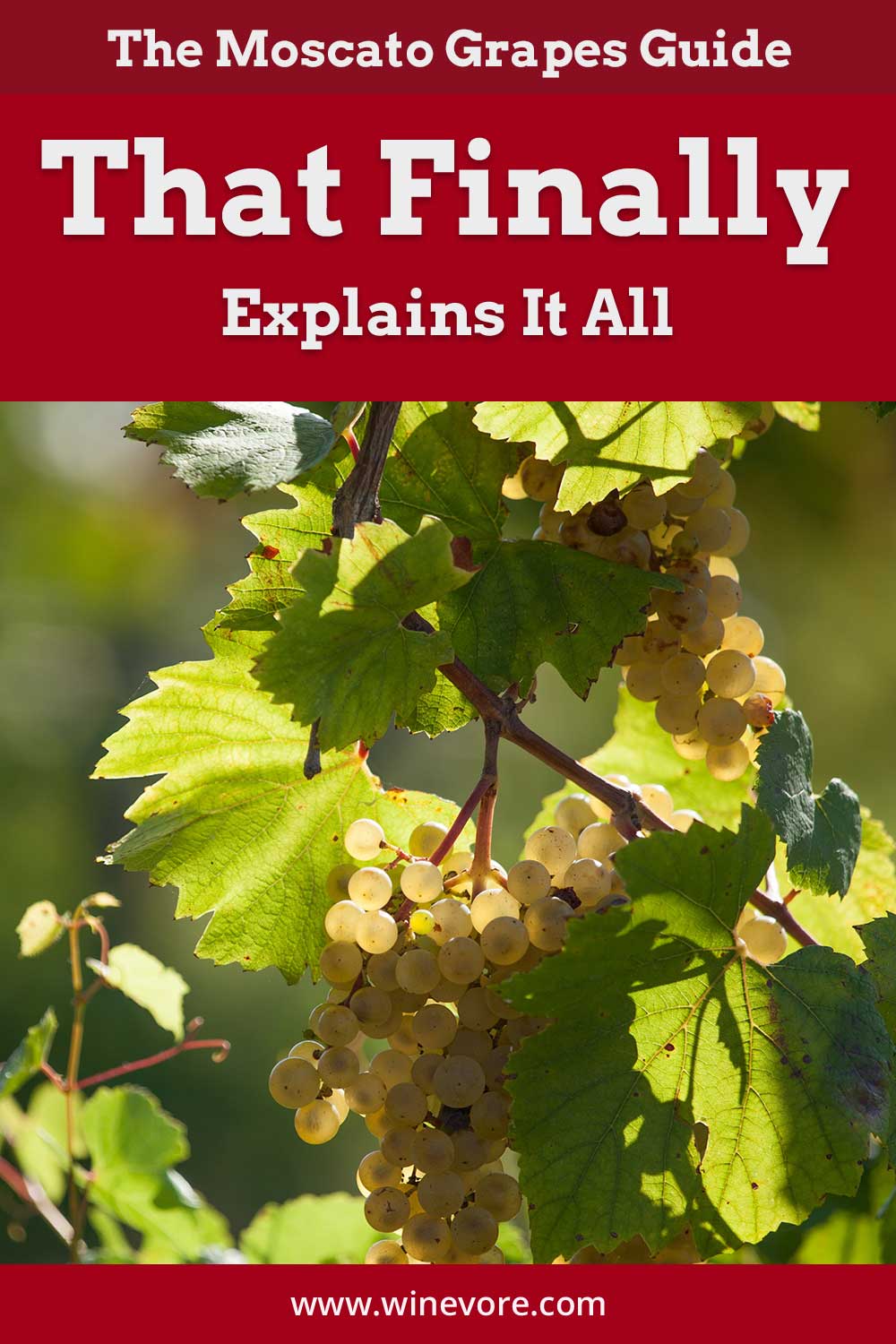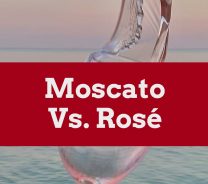The Moscato Grapes Guide That Finally Explains It All
Last Updated on August 1st, 2023
Reader Disclosure Disclosure: We may earn commissions for purchases made through links on our site. Learn more on our about us page.Have you ever wondered what kind of grapes are used to make that delicious dessert wine called Moscato?
There are many kinds of grapes used in the winemaking process, and a lot of those are products of multiple original varieties being blended together to make new grapes. So chances are, there are multiple variations of each one.

What grapes are in Moscato wine?
Generally, Moscato is made from Muscat grapes. However, there are many different varieties of Muscat grapes. In fact, there are over 200 varieties.
Some examples of Muscat grapes include:
- Moscato Bianco – a white grape
- Muscat of Alexandria – a white grape
- Black Muscat – a dark purple, almost black grape
- Moscato Rosa – a red grape
- Goldmuskateller – a yellow grape
These grapes grow all over the world, each variation thriving in its own perfect climate. Some variations are hardy and can withstand sub-zero temperatures. Others need more sunshine and warmth.
Muscat grapes are also used for cooking or for raisin production, especially Muscat of Alexandria.
What are the parent grapes of Moscato?
The Muscat grapes are part of the Vitis vinifera species of grape. With there being so many varieties, multiple “parent grapes” are known.
Moscato Bianco is known to be the oldest variety in the Muscat family. It is best known for its use in Asti and Moscato d’Asti. However, Muscat of Alexandria dates back almost as far. These two are most commonly half of the parent grapes in other Muscat varieties.
Each new variety offers different hardiness and thickness of the skin. Some new grapes are natural occurrences, while others have been cultivated by various civilizations in search of a grape perfect for their intended use.
Ever wondered about the specifics of Moscato’s grapes?
The varieties of Muscat grapes are as varied as the Moscatos they produce. These grapes come in nearly every color a grape can come in, ranging from white to black. Their shapes and sizes are just as scattered.
So what sets them apart from other grapes? Their fragrance. A spicy, floral, honeyed aroma wafts through the air when Muscat grapes are ripe. This aroma is indicative of their flavor as well.
One variety, the Blue Muscat grape, has an extremely resilient nature. This variety is capable of growing in temperatures reaching minus ten degrees Fahrenheit and is resistant to most plant diseases.
These vines produce a small, round berry with a blue tint. These berries grow in tight clusters.
Can you eat Moscato grapes?
The quick answer is: yes, this delicious variety can absolutely be used as table grapes. Typically available imported in stores in the United States in spring and fall, they are perfect either straight off the vine or as an ingredient in your favorite dishes.
A perfect touch of added flavor atop butternut squash. Muscat grapes pair well with most meats, but especially with duck. Because of their natural sweetness, they are a great topping for a salad, made into a sorbet, or blended into slush because of their natural sweetness.
A few recipes that include Muscato grapes are:
- Clafoutis with Muscat Grapes
- Muscat Grape Granita
- Muscat Grape Jelly
Interesting facts about Moscato grapes
While found around the globe, Muscat grapes have different names depending on where they are grown.
Some examples include:
- Muskateller from Austria
- Moschoudia from Greece
- Muskotály from Hungary
There’s a bit of debate when it comes to the origin of the Muscat grape. The exact origin of the grape is unknown. Theories have been made by trying to find the source of the name instead. A couple of these theories include:
- There is a French word “musc,” which means Musk. This theory is based on the aroma some Muscat grapes emit.
- There is an Italian word “Mosca,” which translates to fly. This theory comes from the idea that fruit flies were attracted to them due to the aroma and sugar content.
Most varieties have seeds, but the most recently cultivated varieties do not.
Final Thoughts on Moscato Grapes
Moscato wine is made from various species of Muscat grapes, the oldest of which is Moscato Bianco.
These grapes vary greatly in size and shape but are easily identified by their powerful fragrance. Originally from somewhere in Europe, this species of grape is now found all over the world. Muscat grapes also make great table grapes and can be found in many recipes.


















